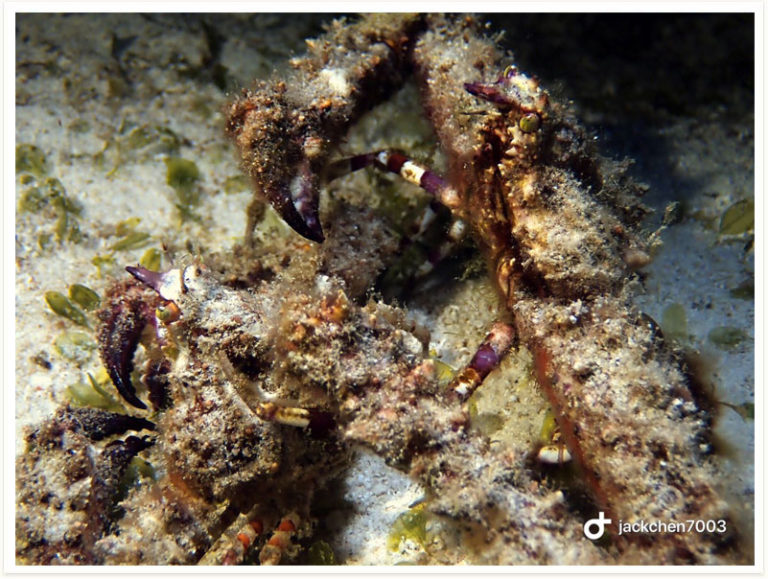卡塔拉海星
Thromidia catalai is a sea star species. It was first described by Pope and Ross Robert Mackerras Rowe circa 1977. Thromidia catalai belongs to the genus Thromidia in the family Mithrodiidae.
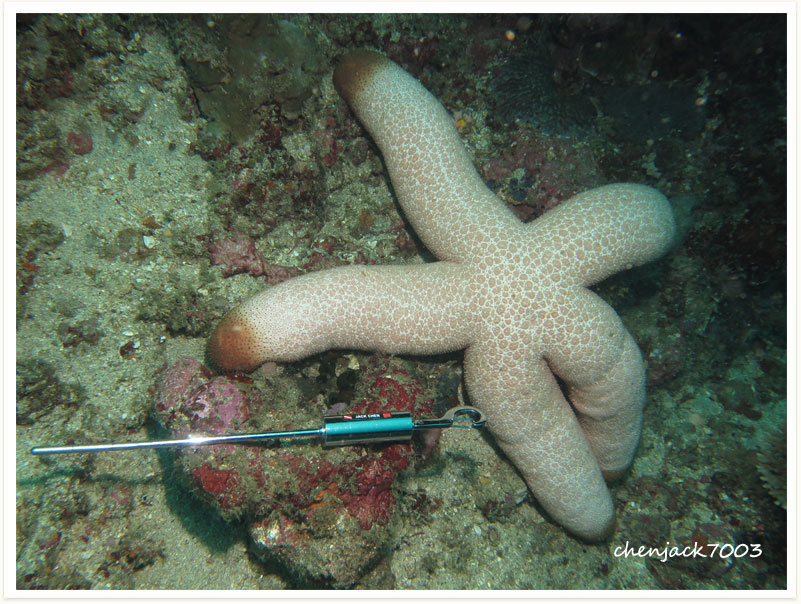
 Underwater Photography
Underwater PhotographyThromidia catalai is a sea star species. It was first described by Pope and Ross Robert Mackerras Rowe circa 1977. Thromidia catalai belongs to the genus Thromidia in the family Mithrodiidae.

Growing to a maximum diameter of 26 cm (10 in), Echinaster callosus has a small central disc and five slender cylindrical arms. The aboral (upper) surface is densely covered by warty protuberances. The colour of this starfish is variable, but may be orange, pink or violet, with the warts being a contrasting colour, usually white, pink, red or mauve. The white warts often occur in bands, particularly towards the tips of the arms. There are small yellowish-green retractable pedicellaria between the warts. The oral (under) surface of the starfish is white with white warts. There are ambulacral grooves on the underside of the arms along which food is passed by ciliary action. The tip of each arm bears an eyespot, as well as a bundle of suckers.
The Choriaster granulatus is a species of Asteroidea described by Christian Frederik Lütken in 1869. The Choriaster granulatus belongs to the genus Choriaster, and is known as the Oreasteridae. There are no subspecies listed.
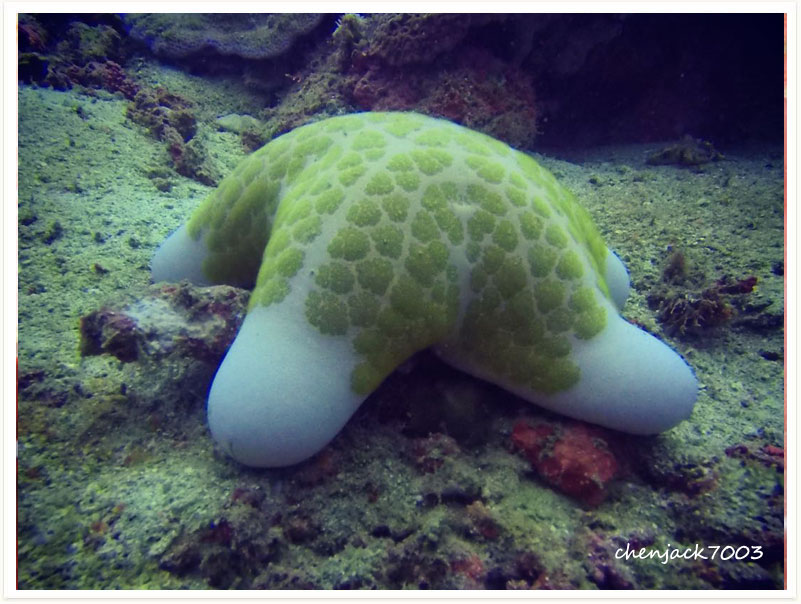
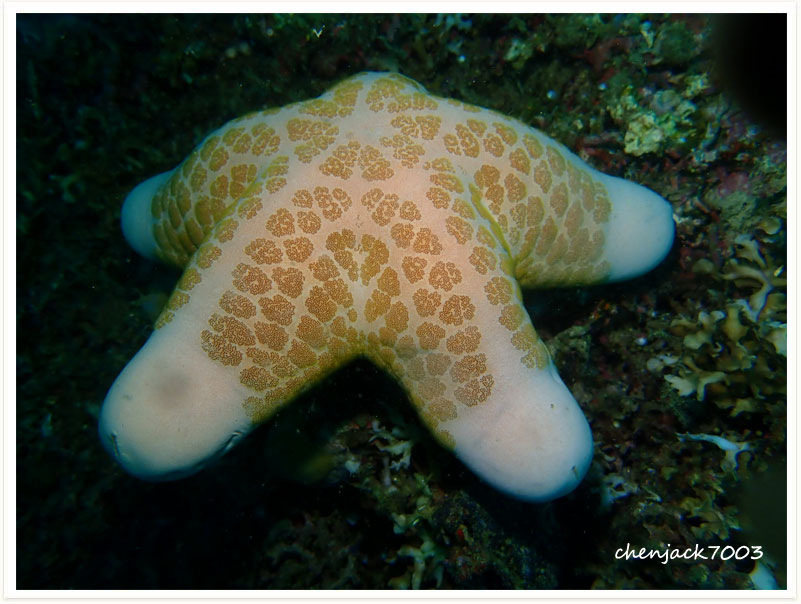
The body form of the crown-of-thorns starfish is fundamentally the same as that of a typical starfish, with a central disk and radiating arms. Its special traits, however, include being disc-shaped, multiple-armed, flexible, prehensile, and heavily spined, and having a large ratio of stomach surface to body mass. Its prehensile ability arises from the two rows of numerous tube feet that extend to the tip of each arm. In being multiple-armed, it has lost the five-fold symmetry (pentamerism) typical of starfish, although it begins its life cycle with this symmetry. The animal has true image forming vision.
Thylacodes is a genus of sea snails, marine gastropod mollusks in the family Vermetidae, the worm snails or worm shells. The species in this genus were previously placed in the genus Serpulorbis.
Unlike some other vermetids, the species in this genus have no operculum.
Terebra is a genus of small to large-sized predatory sea snails, marine gastropod mollusks in the family Terebridae, the auger snails.
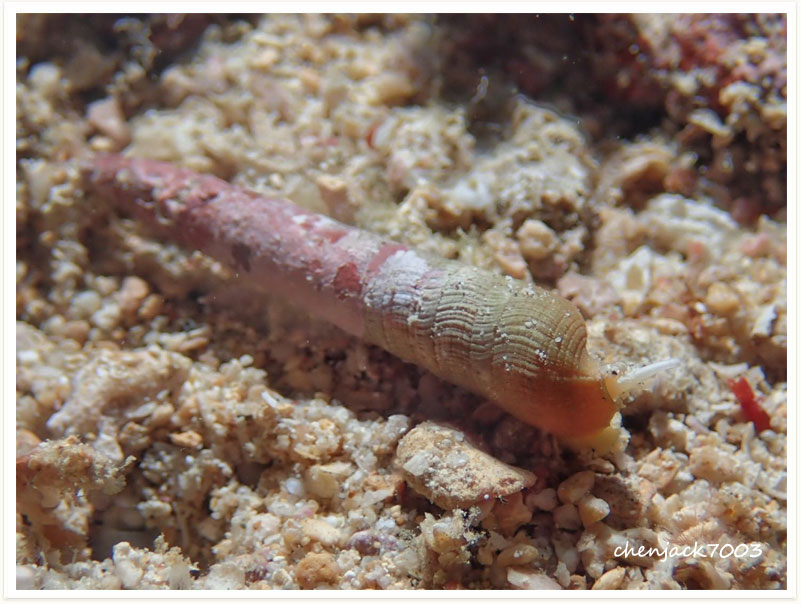
The shells of these quite uncommon cowries reach on average 50–70 millimetres (2.0–2.8 in) of length, with a minimum size of 23 millimetres (0.91 in) and a maximum size of 105 millimetres (4.1 in). They are very variable in pattern and colour. The dorsum surface is smooth and shiny, the basic color is brown or yellowish brown, with three or four yellow or light brown transversal bands. The margins, the base and the teeth are completely dark brown or black. Also the teeth are dark brown, but the teeth spacing is clearer or white. In the living cowries the mantle is greyish or black, with long cylindrical papillae. Mantle and foot are well developed, with external antennae. The lateral flaps of the mantle may hide completely the shell surface and may be quickly retracted into the shell.
Phalium bandatum, common name the banded bonnet, is a species of sea snail, a marine gastropod mollusk in the family Cassidae.
There is one subspecies: Phalium bandatum exaratum (Reeve, 1848)
The size of an adult shell varies between 40 mm and 140 mm.
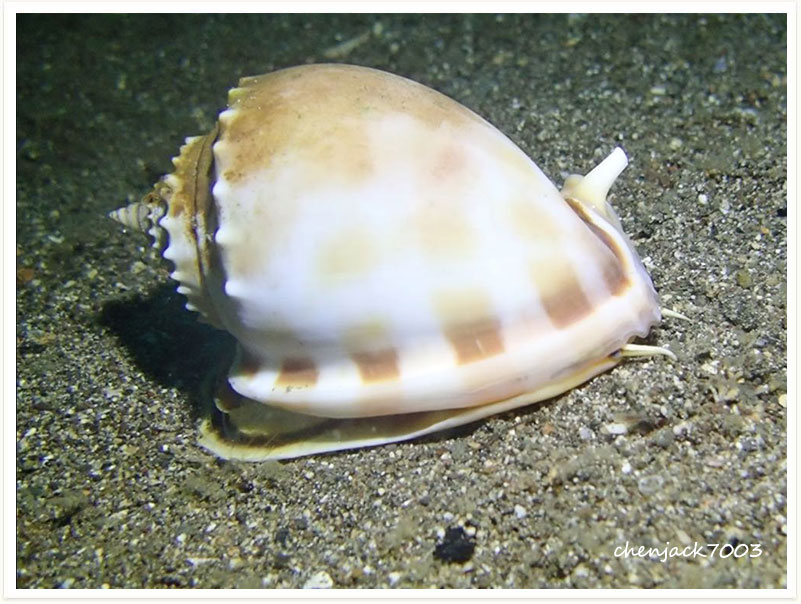
The shells of these quite common cowries reach on average 65–70 millimetres (2.6–2.8 in) of length, with a minimum size of 50 millimetres (2.0 in) and a maximum size of 120 millimetres (4.7 in). They are egg-shaped (hence the Latin name ovum, meaning egg). The surface of the shell is smooth, shiny and completely snow white, with a dark reddish-purple interior, visible through the wide and long aperture, which bears teeth on one side only. In the living cowries the mantle is black, with a pattern of small white spots in adults, while juveniles resemble some toxic nudibranchs of the genus Phyllidia owing to their orange yellow sensorial papillae. The lateral flaps of the mantle usually hide completely the white surface, but the mantle is quickly retracted into the shell opening when the cowry is disturbed.
Oliva oliva is a species of sea snail, a marine gastropod mollusc of the family Olividae, the olive snails.
This is the type species of the genus Oliva.
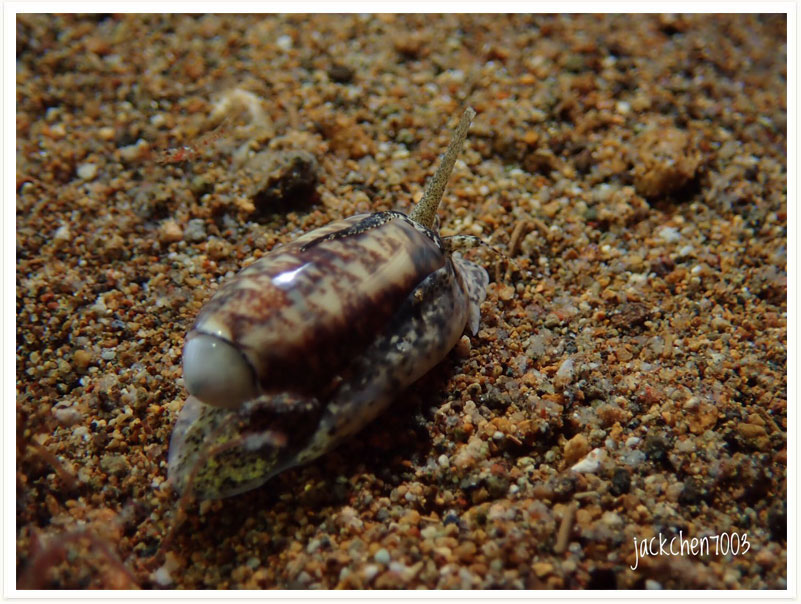
Murex ternispina (also known as Murex Nigrospinosus) is a species of sea snail, a marine gastropod mollusk in the family Muricidae, the murex snails or rock snails.
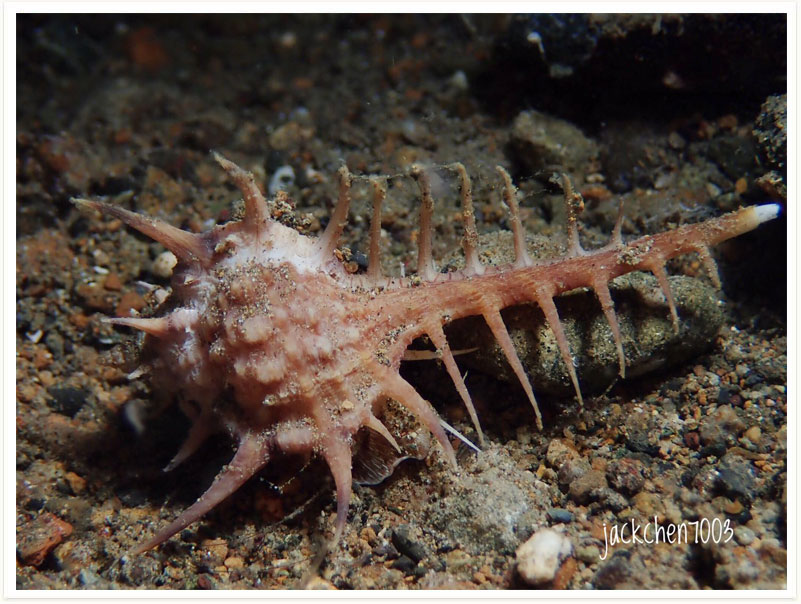
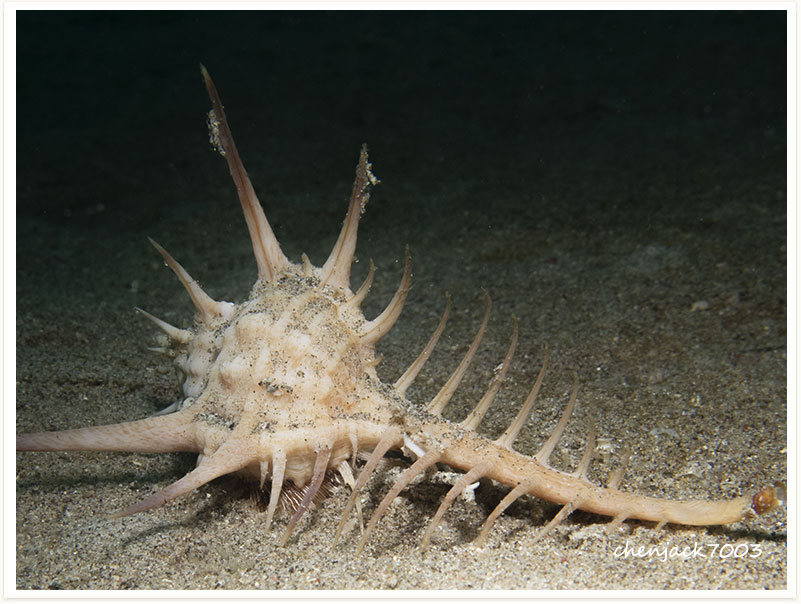
The size of the shell varies between 40 mm and 90 mm.
The somewhat thick shell is ovate and inflated. It has a whitish ground color, varied and spotted with square spots, of a yellow more or less reddish, alternating upon the transverse ribs, with other spots of a dull white. The short spire is composed of six convex whorls, slightly flattened above, banded with ribs equally convex, wide, not distant, and divided by narrow, shallow furrows. The aperture is somewhat narrow, toothed upon both edges, colored yellow within. The outer lip is dilated, particularly towards the base, and forms externally a very thick convex margin, the external part of which is sharp, undulated, and its internal surface furnished with ten or twelve transverse, distant teeth, resembling folds. The inner lip consists of a smooth plate, convex and white, which partially covers the body of the shell. The columella presents a pretty deep emargination, above which are observed several transverse thick folds, and some others, less numerous, more oblique, and less distinctly marked.
The shells of these very common cowries reach on average 35–45 millimetres (1.4–1.8 in) of length, with a minimum size of 20 millimetres (0.79 in) and a maximum size of 100 millimetres (3.9 in). The shape is usually pear-shaped, the dorsum surface is smooth and shiny and may be pale or dark brown, with several small white spots. The margins and the extremities are clearer, while the base is generally white, with a wide sinuous aperture and long labial teeth. The margins show also numerous thin vertical whitish lines. The juvenile forms have two-three clearer trasversal bands on the shell dorsum. These shells are quite similar and may be confused with the shells of Lyncina camelopardalis. In the living cowries the mantle is grey-brown and almost transparent, with long whitish tree-shaped papillae. Mantle and foot are very well developed, usually with external antennae.
Leporicypraea mappa (previously known as Cypraea mappa), common name the map cowry, is a species of large sea snail, a cowry, a marine gastropod mollusk in the family Cypraeidae, the cowries.
This is considered an economically important species in the Indo-West Pacific, where it is usually collected both for food and for shell trading.
Lambis scorpius, common name the scorpion conch or scorpion spider conch, is a species of large sea snail, a marine gastropod mollusk in the family Strombidae, the true conchs.
The size of an adult shell varies between 95 mm and 220 mm.
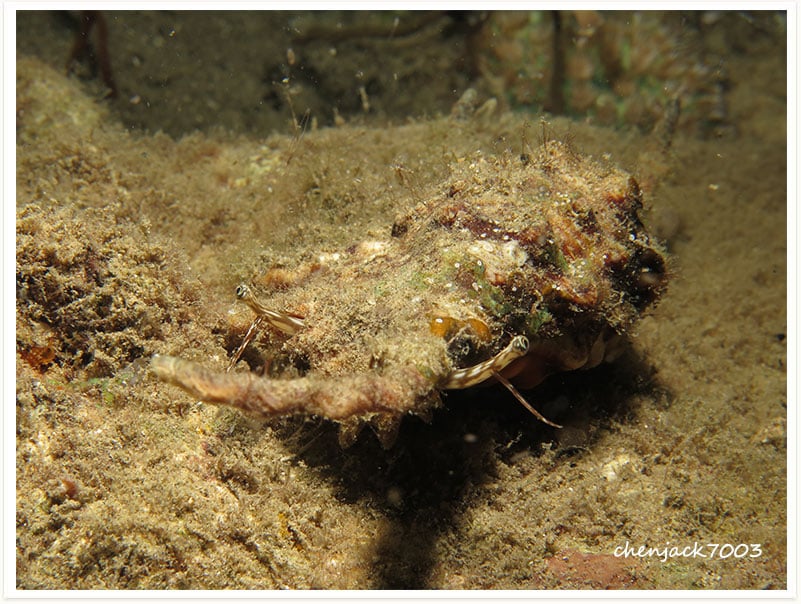
This quite common species looks very similar to Cypraea tigris, but its shell is more slender and lighter. The shells of Cypraea pantherina reach on average 57–65 millimetres (2.2–2.6 in) of length, with a minimum size of 37 millimetres (1.5 in) and a maximum size of 118 millimetres (4.6 in). The shape of these shells is roughly elongate-pyriform. They are quite heavy for their size. The dorsum surface is smooth and shiny, usually whitish or pale brown, densely covered with dark brown circular spots. A blurred longitudinal reddish line runs along the midline where the two halves of the mantle meet in life.
Periclimenes affinis is a species of shrimp found in the Pacific and Indian Oceans.It was first named by Leo Zehntner in 1894.
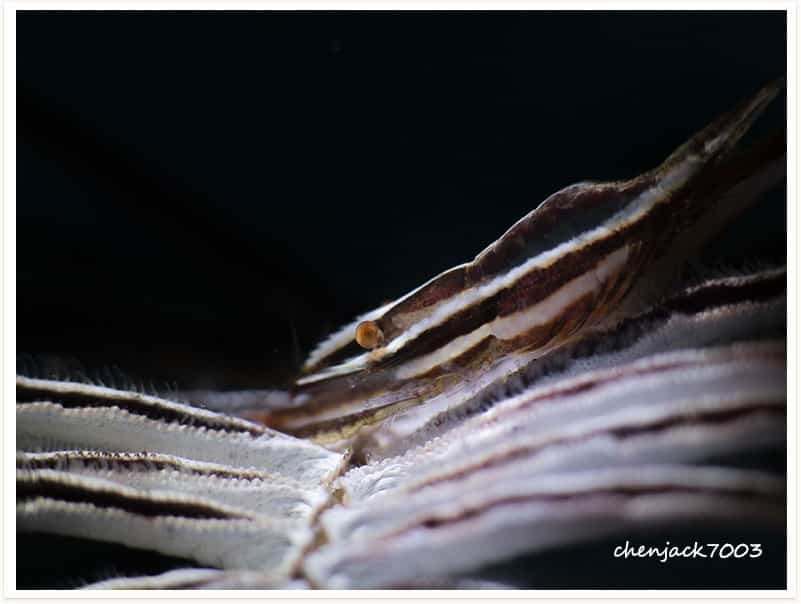
Miropandalus hardingi is a shrimp species from the Pandalidae family. The scientific name of the species was first validly published in 1983 by Bruce.
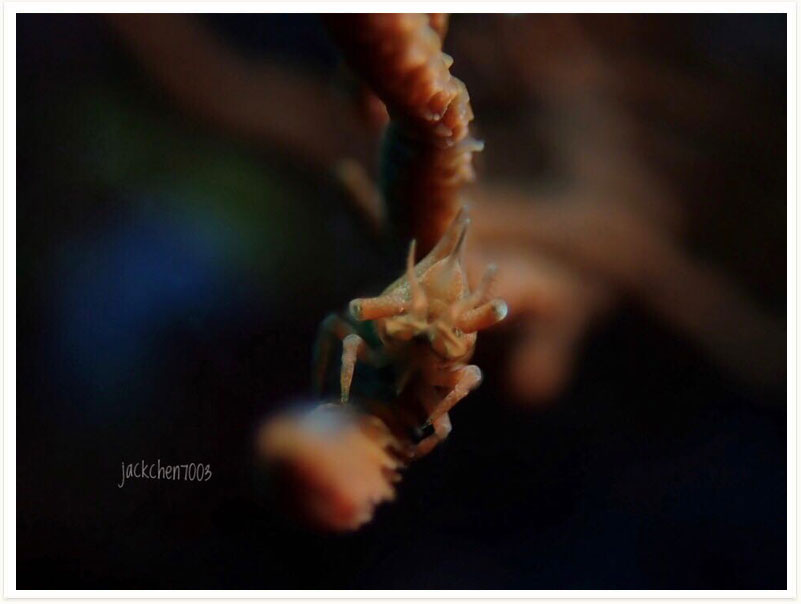
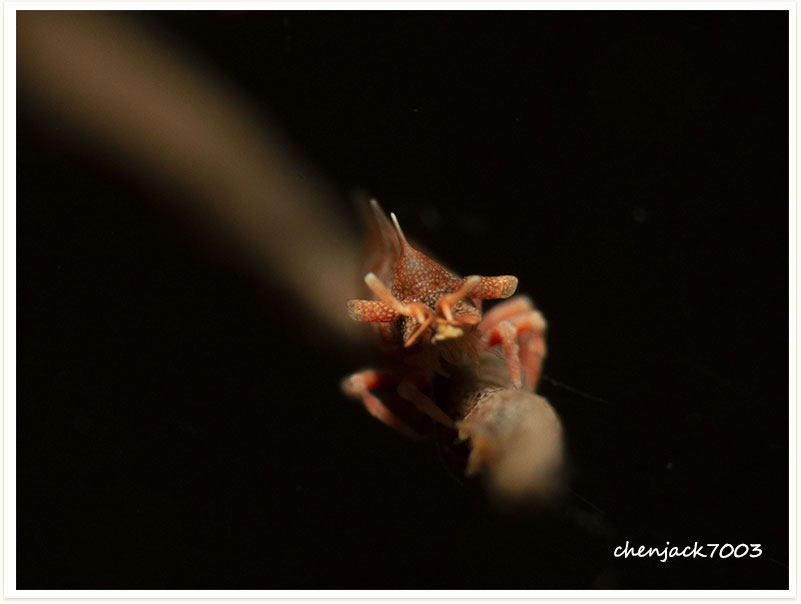
Lysiosquillina lisa is a praying mantis of the Lysiosquillidae family. The scientific name of the species was first validly published in 2001 by Ahyong & Randall.

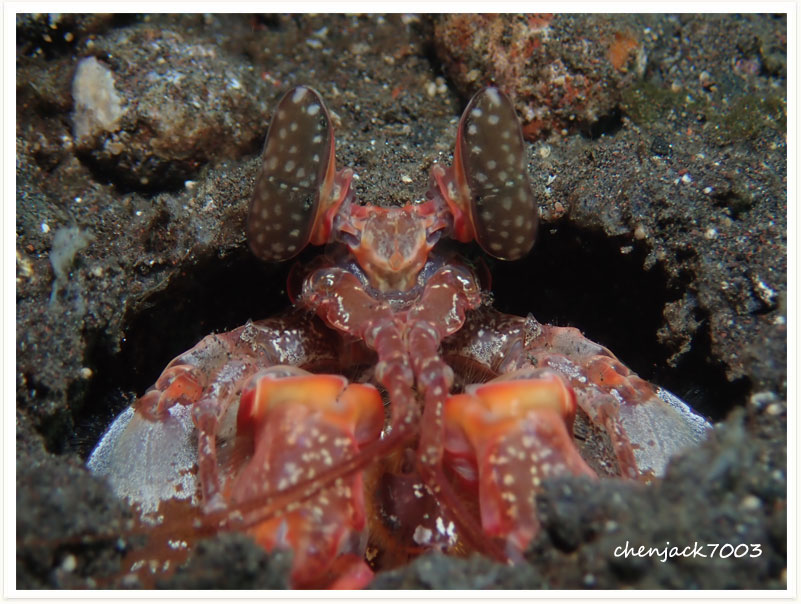
Idiomysis is a genus of small mysids found in warm, shallow waters of Indian Ocean (including Red Sea) and Pacific.
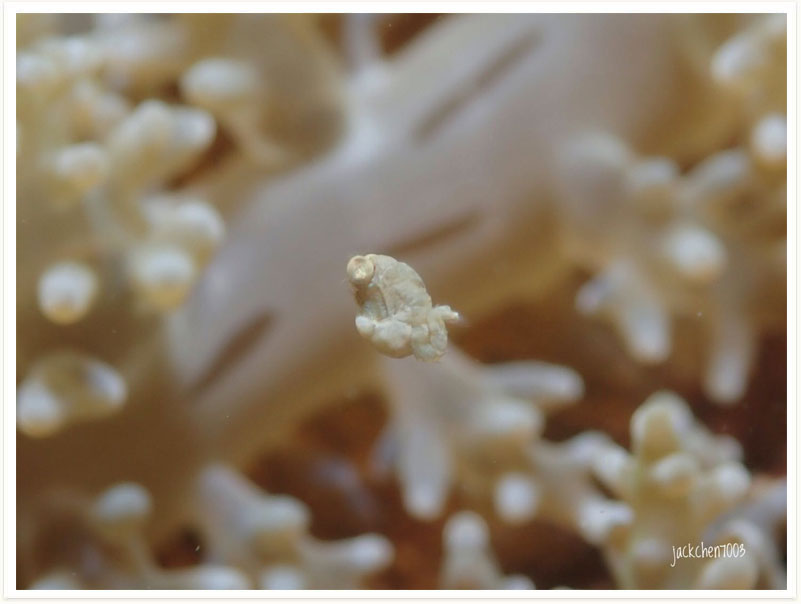
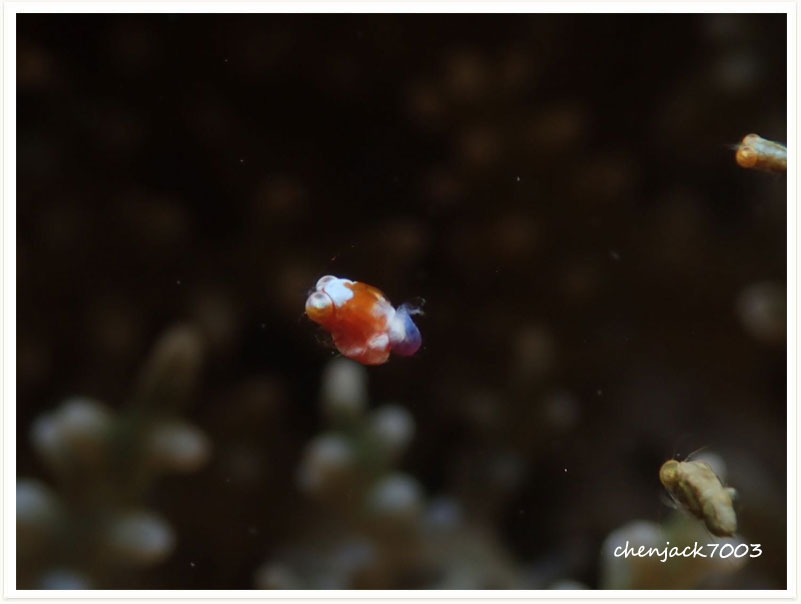
Hippolyte commensalis is a shrimp species from the Hippolytidae family. The scientific name of the species was first validly published in 1925 by Kemp.
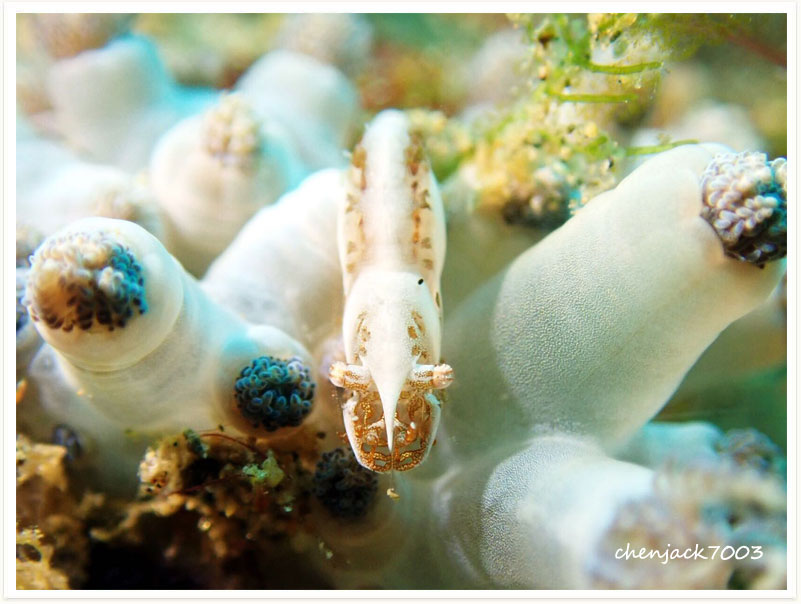
Marin, I. (2012). The “Hamopontonia corallicola” Bruce, 1970 species complex (Crustacea, Decapoda, Palaemonidae): new records and new species from the Great Barrier Reef, Australia. Zootaxa. 3272: 35-56.
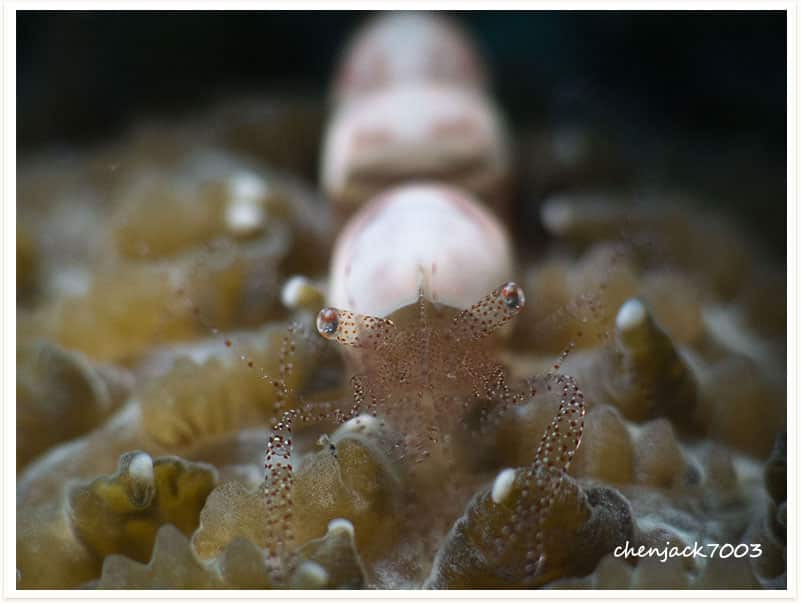
Gelastocaris paronae is a shrimp species from the Hippolytidae family. The scientific name of the species was first validly published in 1905 by Nobili.
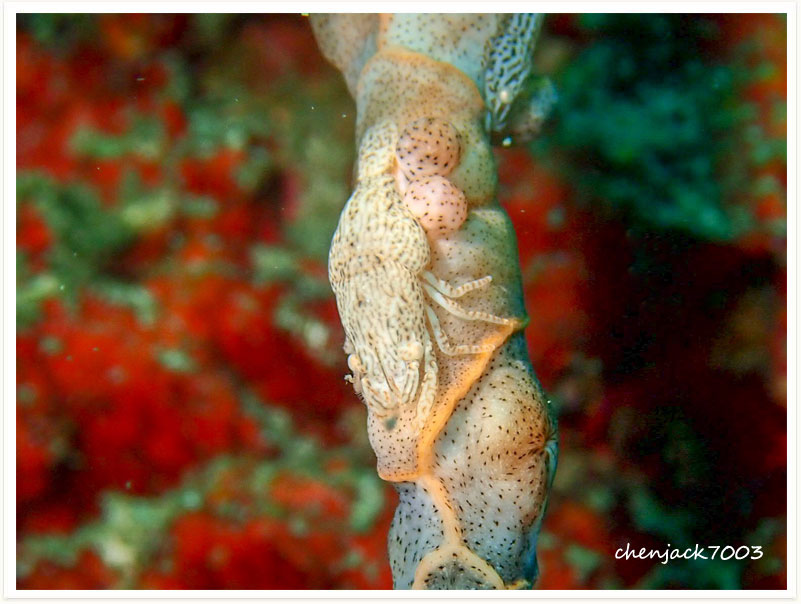
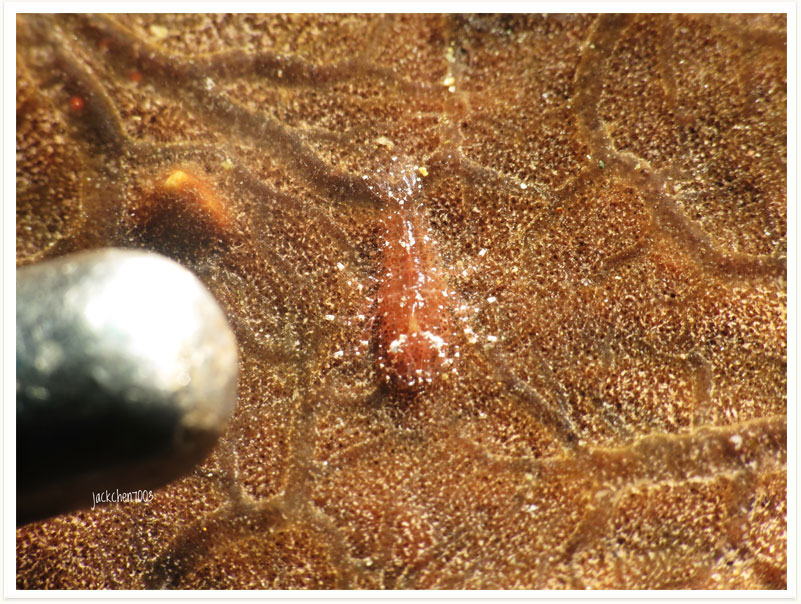
Dasycaris zanzibarica is a shrimp species from the Palaemonidae family. The scientific name of the species was first validly published in 1973 by Bruce.
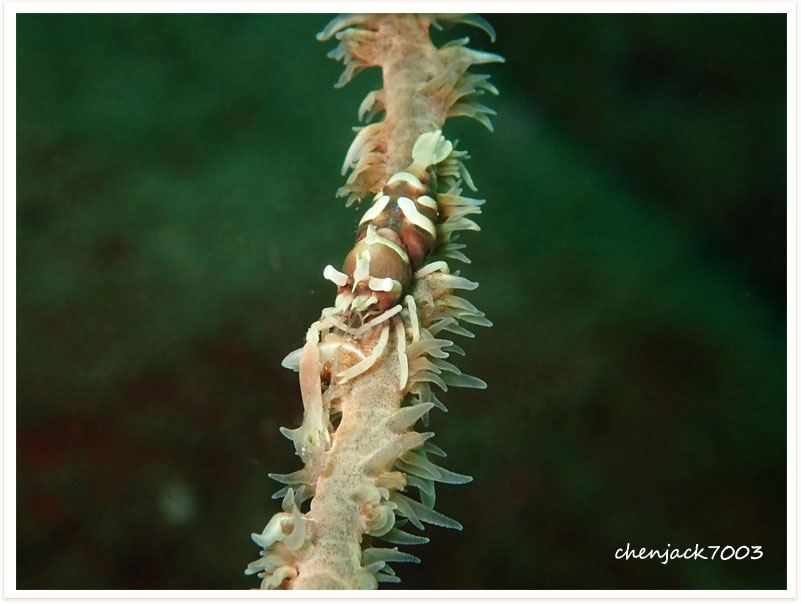
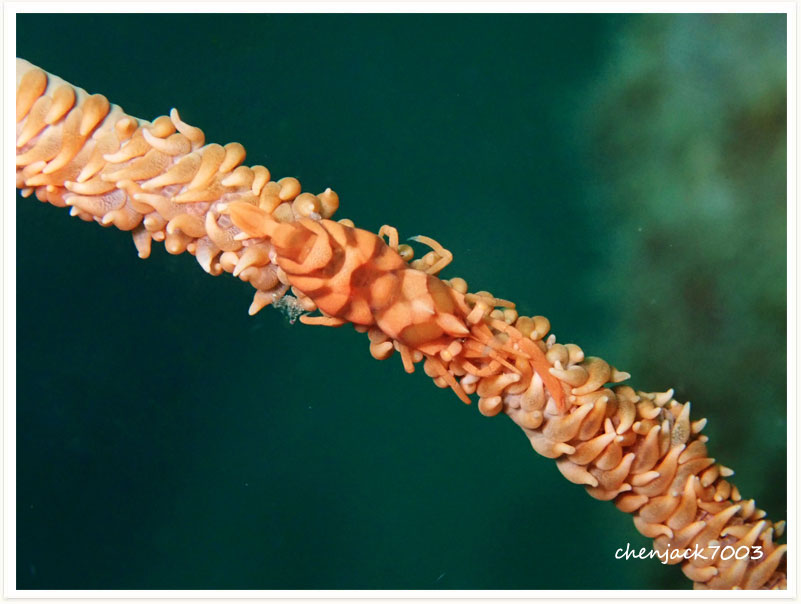
Araiopontonia odontorhyncha is a shrimp species from the Palaemonidae family. The scientific name of the species was first validly published in 1970 by Fujino & Miyake.
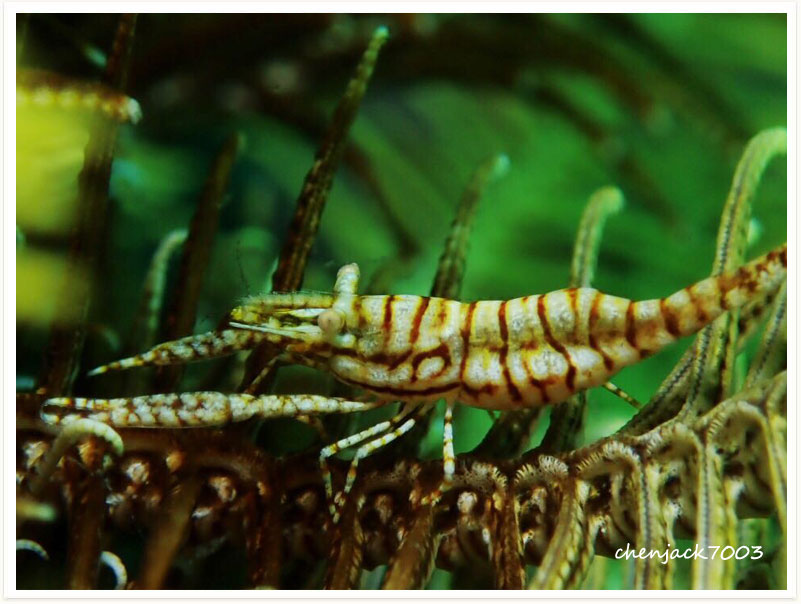
This species of shrimp can be easily confused with Allogalathea elegans (crinoid squat lobster) due to its long chelipeds, the visible shape of its cephalothorax, its abdomen slightly curved under the body and by its colours. However, Allopontonia brockii differs in several points from Allogalathea elegans:
Maretia planulata is a sea urchin from the Maretiidae family.
The scientific name of the species was published in 1816 by Jean-Baptiste de Lamarck.
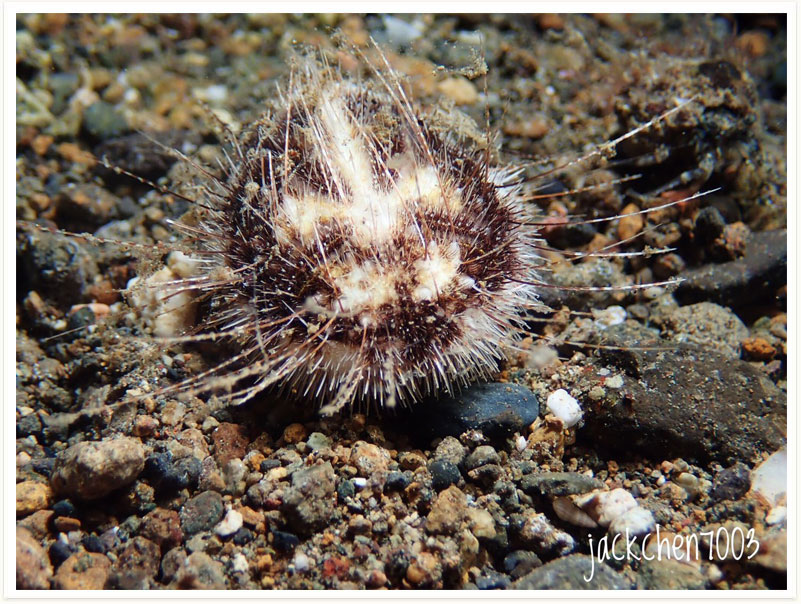
The giant clams are the members of the clam genus Tridacna that are the largest living bivalve mollusks. There are actually several species of “giant clams” in the genus Tridacna, which are often misidentified for Tridacna gigas, the most commonly intended species referred to as “the giant clam”.
These pen shells can reach a length of about 80–90 cm (31–35 in). They are characterized by thin, elongated, wedge-shaped, and almost triangular shells with long, toothless edges. The surface of the shells shows radial ribs over their entire length.
Pinna is distinguished from its sibling genus Atrina by the presence of a sulcus dividing the nacreous region of the valves, and the positioning of the adductor scar on the dorsal side of shells.
The giant honeycomb oyster (Hyotissa hyotis) is a very large saltwater oyster, a marine bivalve mollusk.
Species in this family are known as honeycomb oysters or “foam oysters” because under magnification, their shell structure is foam-like.
Like most bivalves, the giant honeycomb oyster is a filter feeder.
Ethalia catharinae is a species of sea snail, a marine gastropod mollusk in the family Trochidae, the top snails.
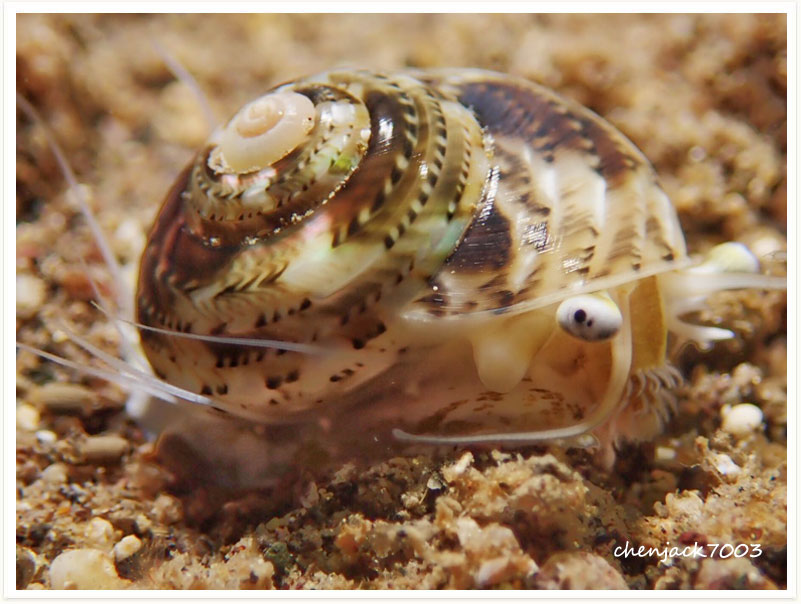
Thelenota ananas (pineapple sea cucumber) is a species of sea cucumber characterized by its large size, warm colors, and pointed, star-shaped teats covering the entire body, grouped in rows of 2 or 3, as seen in Figure 1. Their body is reddish-orange in color, with the teats slightly darker and able to reach up to 70 centimeters (28 in) in length, with a weight of between 3 kg to 6 kg, and have numerous large tube feet on the flat ventral side of their body. T. ananas is a slow growing organism.
E. godeffroyi is a long, slender sea cucumber growing to a length of about 40 cm (16 in). A ring of fifteen feathery tentacles encircle the mouth. The body colour is creamy white with blotches of grey and a pair of longitudinal brown or greenish stripes. The spicules (microscopic calcareous structures that project through the skin) are a mixture of anchors and perforated plates with large holes.
The Napoleon snake eel (Ophichthus bonaparti, also known as the Napoleon eel, the Purplebanded snake eel, or the Saddled snake-eel) is an eel in the family Ophichthidae (worm/snake eels). It was described by Johann Jakob Kaup in 1856, originally under the genus Poecilocephalus.It is a marine, tropical eel which is known from the Indo-Pacific, including Durban, South Africa, Mauritius, Indonesia, Japan, Australia, and the Penghu Islands. It is known to dwell at a depth of 20 metres (66 ft), and inhabits lagoons and reefs; it forms solitary burrows in sand sediments. Males can reach a maximum total length of 75 centimetres (30 in).
The barred-fin moray is a medium-sized fish that can reach a maximum length of 50 cm, but the ones usually observed are about 30 cm. It is serpentine in shape, its body has a light brown color and it is covered with a mix of darker spots and broken and irregular dark brown lines. A relatively large whitish spot is located below the back corner of the eye.
The Greyface moray is a medium-sized fish that is most commonly observed at lengths of around 40 cm, reaching a maximum length of 66 cm. Its body is serpentine in shape, is speckled with small dark spots and has a predominantly beige color that can vary in strength between different eels . The head is grey with distinctive white eyes. Here is a video of the eel in its natural habitat.
The turkey moray is a medium size moray which can reach a maximum length of 120 cm, but specimens usually encountered are much smaller.Its serpentine in shape body has a dark brown to black background color dotted with numerous small white spots uniformly distributed. The inside of its mouth is completely white.
The yellow-edged moray (Gymnothorax flavimarginatus) is a moray eel of the family Muraenidae, found in the Indo-Pacific Oceans at depths to 495 ft. (150 m). Its length is up to 7.87 feet (240 cm). This moray eel was recently identified as natural predator of the lionfish Pterois miles in its native habitat in the Red Sea.
The whitespotted garden eel (Gorgasia maculata), also known as the Indian spaghetti eel, is an eel in the family Congridae (conger/garden eels). It was described by Wolfgang Klausewitz and Irenäus Eibl-Eibesfeldt in 1959. It is a marine, tropical eel which is known from the Indo-Western Pacific, including Maldives, the Solomon Islands, the Philippines, the Cocos Islands, Comoros, India, Indonesia, and Papua New Guinea. It dwells at a depth range of 25 to 48 metres (82 to 157 ft), and lives in non-migratory colonies that form burrows on sandy slopes, usually near coral reefs. Males can reach a maximum total length of 70 centimetres (28 in).
Lauriea siagiani is a small squat lobster, up to 7 millimetres (0.28 in) long. It differs from the only other species in the genus, Lauriea gardineri by a number of features, but most obviously by the coloration: L. gardineri is pale brown with darker bands, while L. siagiani is orange or pink with red or purplish markings.
Allogalathea babai is a ten-pot species from the Galatheidae family. The scientific name of the species was first validly published in 2011 by Cabezas, Macpherson & Machordom.
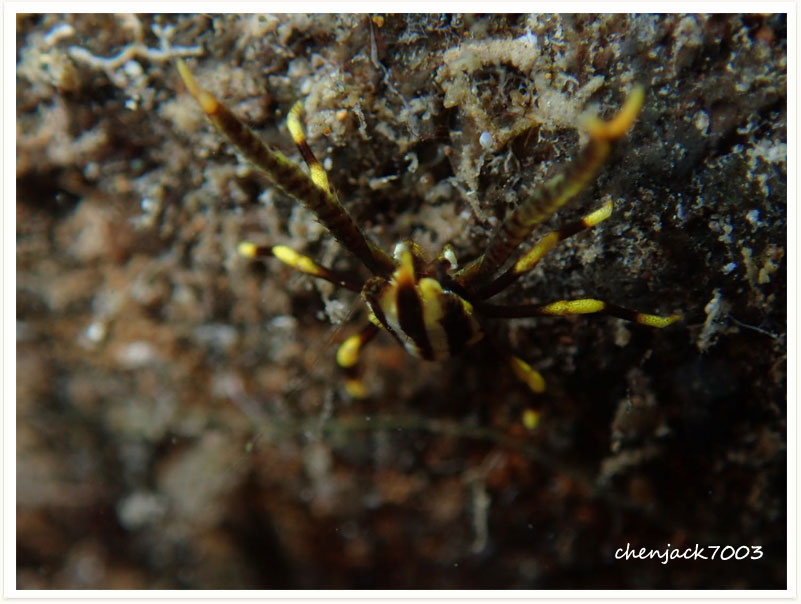
Pseudoceros is a genus of flatworms.
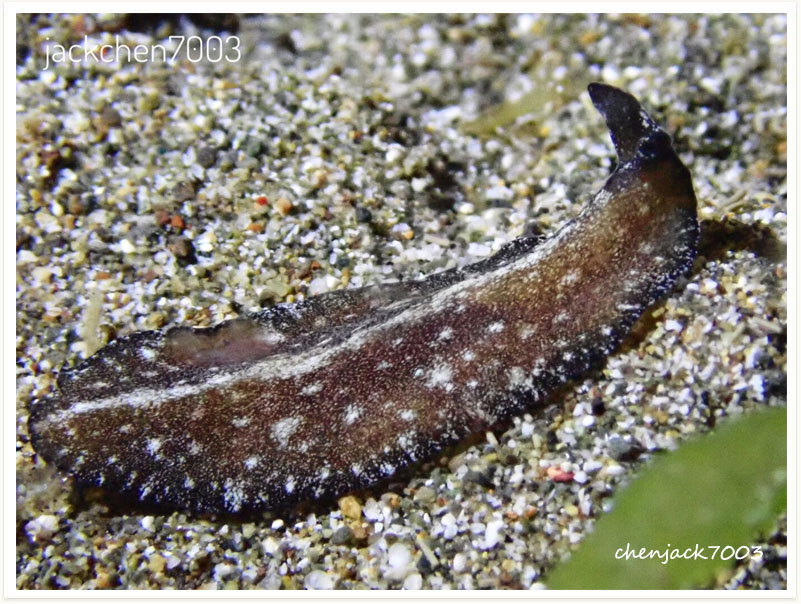
Ascidiophilla alba is a flatworm (Platyhelminthes). The worm is ambiguous. The species lives in the salt water.
The genus Ascidiophilla, in which the flatworm is placed, belongs to the Euryleptidae family. The scientific name of the species was first validly published in 2002 by Newman.
Quadrella maculosa is a species of crab from the Trapeziidae family. The scientific name of the species was first validly published in 1898 by Alcock.
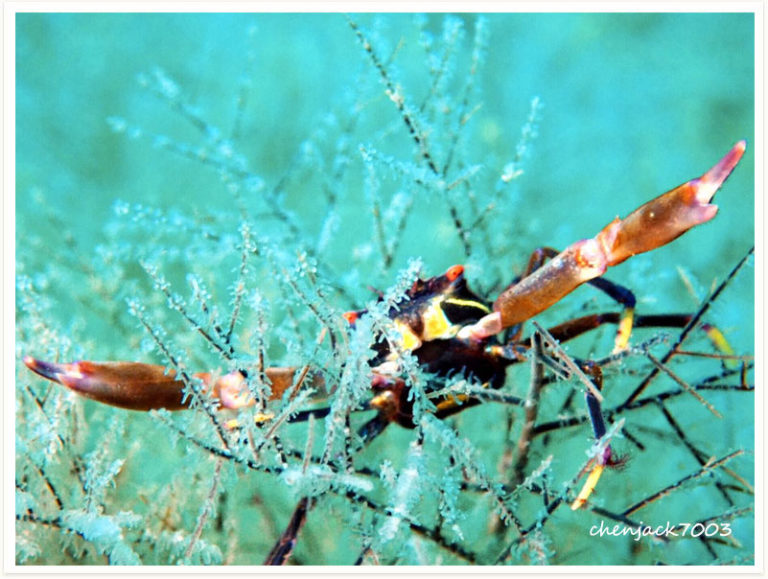
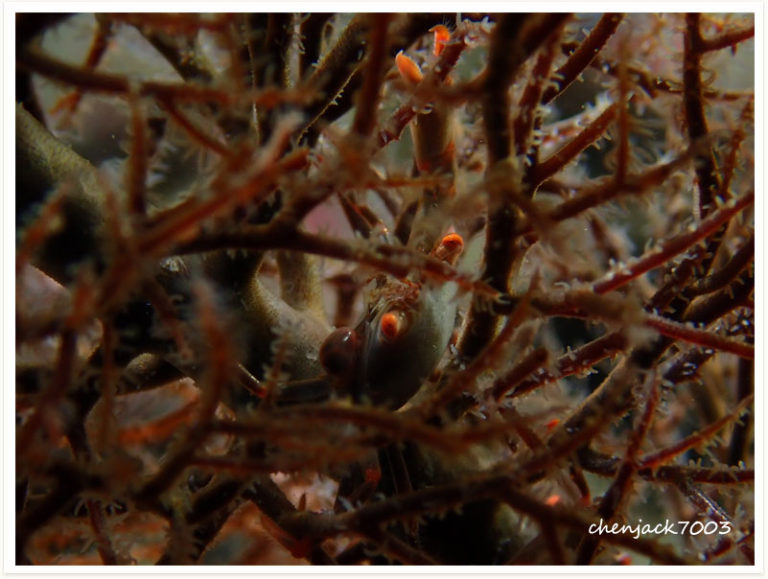
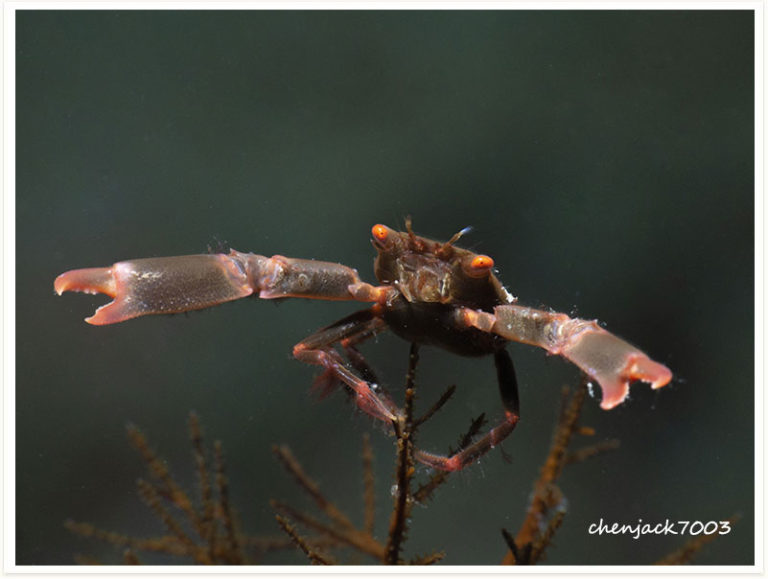
Sea spiders have long legs in contrast to a small body size. The number of walking legs is usually eight (four pairs), but species with five and six pairs exist. Because of their thin body and legs, no respiratory system is necessary, with gases moving by diffusion. A proboscis allows them to suck nutrients from soft-bodied invertebrates, and their digestive tract has diverticula extending into the legs.
An Pseudocryptochirus viridis in uska species han Malacostraca nga ginhulagway ni Hiro hadton 1938. An Pseudocryptochirus viridis in nahilalakip ha genus nga Pseudocryptochirus, ngan familia nga Cryptochiridae. Waray hini subspecies nga nakalista.
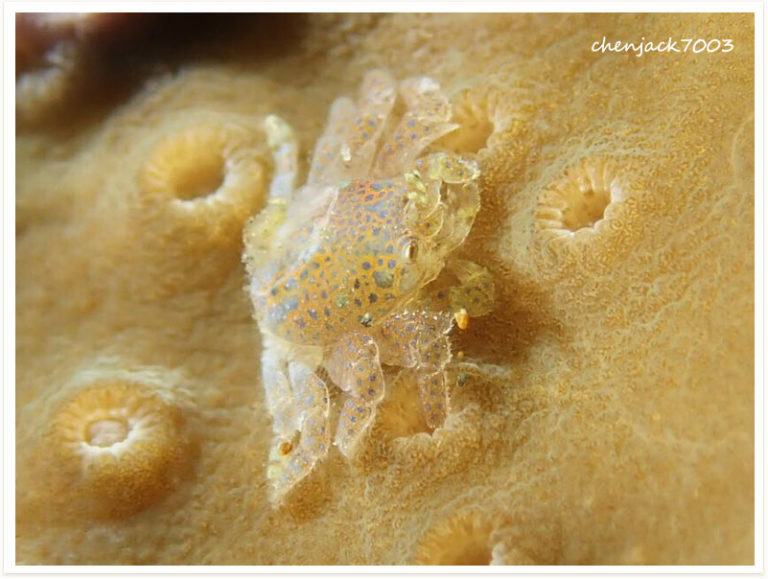
Neopetrolisthes maculatus is a species of porcelain crab from the Indo-Pacific region.It is a small, colourful crustacean with a porcelain-like shell. This porcelain crab is usually found within the stinging tentacles of a number of sea anemone species.
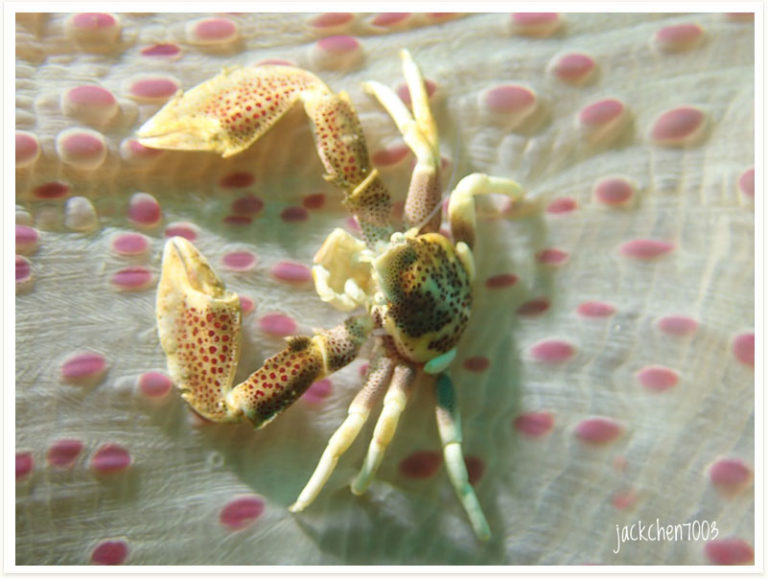
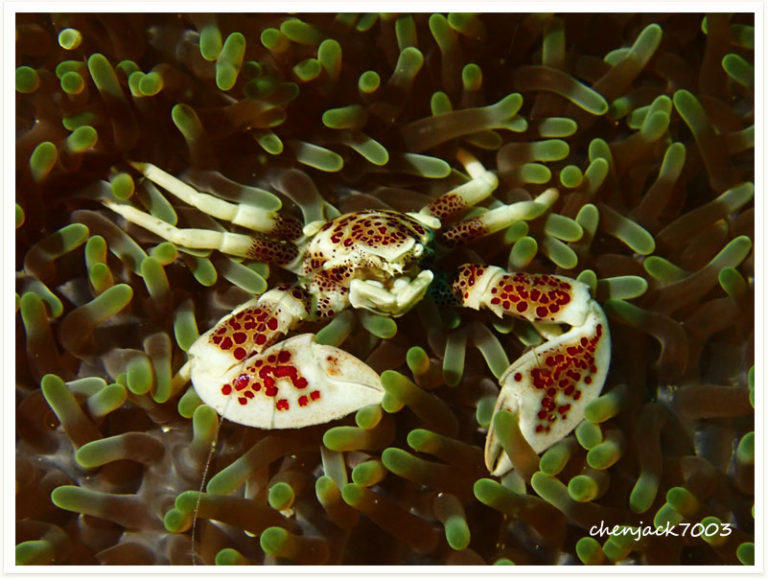
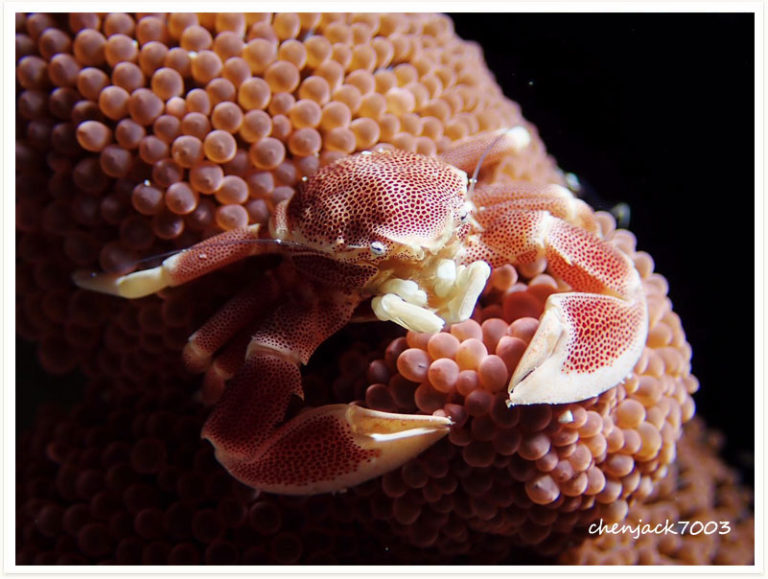
Loxorhynchus crispatus, known generally as the masking crab or moss crab, is a species of true crab in the family Epialtidae. It is found in the East Pacific.
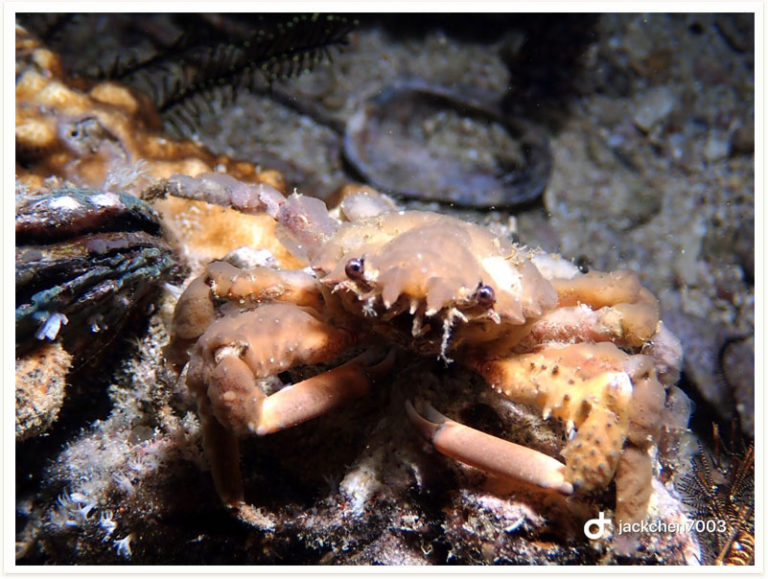
Lissocarcinus laevis is een krabbensoort uit de familie van de Portunidae. De wetenschappelijke naam van de soort is voor het eerst geldig gepubliceerd in 1886 door Miers.
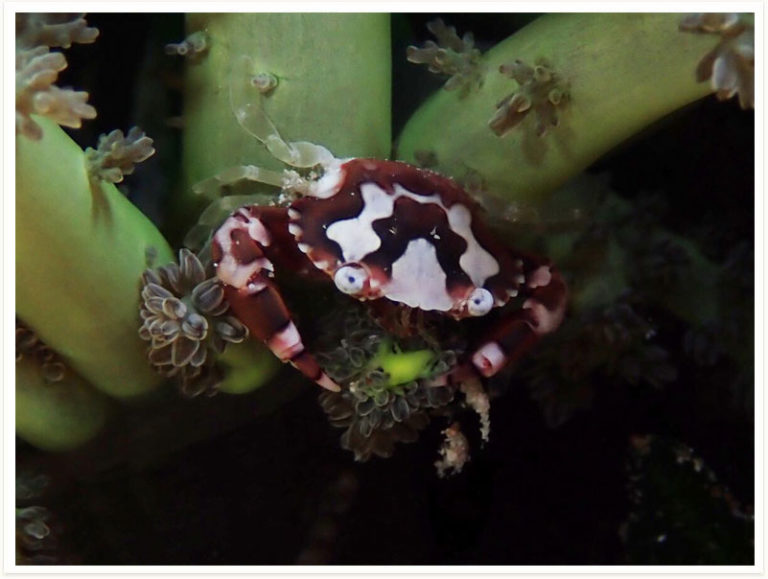
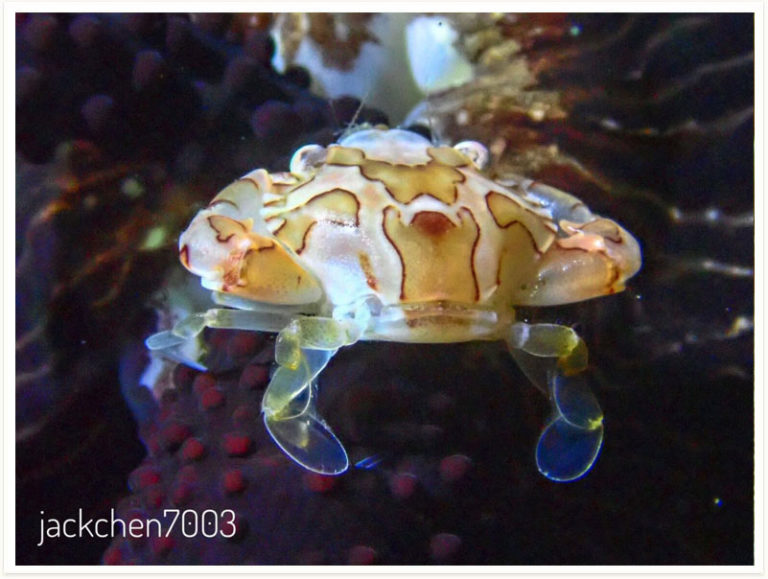
Daldorfia horrida is a crab species from the Parthenopidae family. The scientific name of the species was first validly published in 1758 by Linnaeus.
